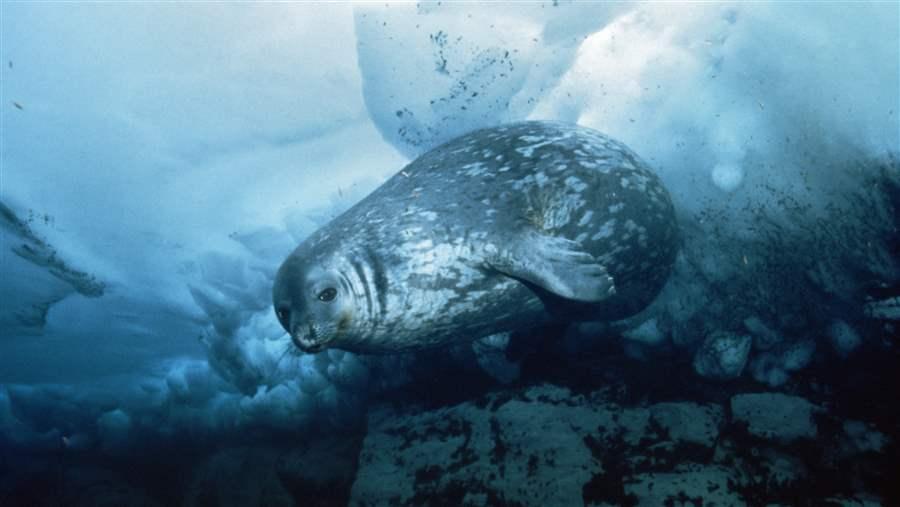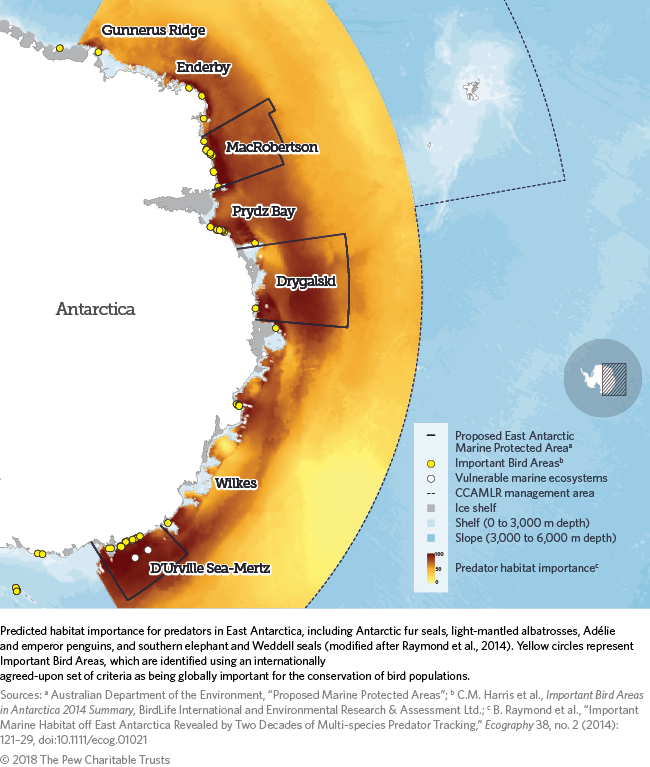Protection for East Antarctica
Continuing momentum for safeguarding vital Southern Ocean waters
This fact sheet was revised in March 2018 to reflect the new title and relative terms of the East Antarctic MPA proposal.
Overview
In the waters off East Antarctica, the MacRobertson, Drygalski, and D’Urville Sea-Mertz areas cover almost a million square kilometres. Together, they make up the current proposal for a marine protected area (MPA) to be considered by the Commission for the Conservation of Antarctic Marine Living Resources (CCAMLR). The Pew Charitable Trusts supports establishment of no-take marine reserves because evidence shows that they help strengthen ecosystems and rebuild biodiversity. Marine reserves also can boost climate resilience. Specifically, no-take reserves can help the oceans and the planet adapt to six key impacts of a changing climate: ocean acidification, sea level rise, increased storm intensity, shifts in species distribution, decreased biological productivity, and oxygen availability.
Recommendations
CCAMLR should adopt a permanent MPA protecting the MacRobertson, Drygalski, and D’Urville Sea-Mertz areas. The Commission should clearly indicate which areas are fully protected from fishing. In particular, it should:
- Designate the shelf depressions in each of the three areas as no-take zones to safeguard shelf area habitats.
- Designate the entire D’Urville Sea-Mertz area as no-take to protect foraging and breeding grounds of emperor and Adélie penguins. Some Adélie colonies in the area have experienced significant chick die-offs in recent years.
- Create a no-take area in the D’Urville Sea-Mertz area, which in addition to providing protections for at-risk Adélie penguin colonies would best meet the critical conservation objectives to safeguard:
- Food webs and foraging grounds for other seabirds and marine mammals.
- The biodiversity associated with canyons and ice shelves.
- Vulnerable marine ecosystems (VMEs), both known and unknown.
- Nursery areas for important Antarctic forage species, such as Antarctic silverfish.
- Adopt in subsequent years the previously proposed areas of Gunnerus, Enderby, Prydz Bay, and Wilkes to ensure full protection of East Antarctica.
- Increase no-take protections within the East Antarctic Marine Protected Area as new data and information about threats and risks to these ecosystems emerge, including the discovery of new VMEs.









